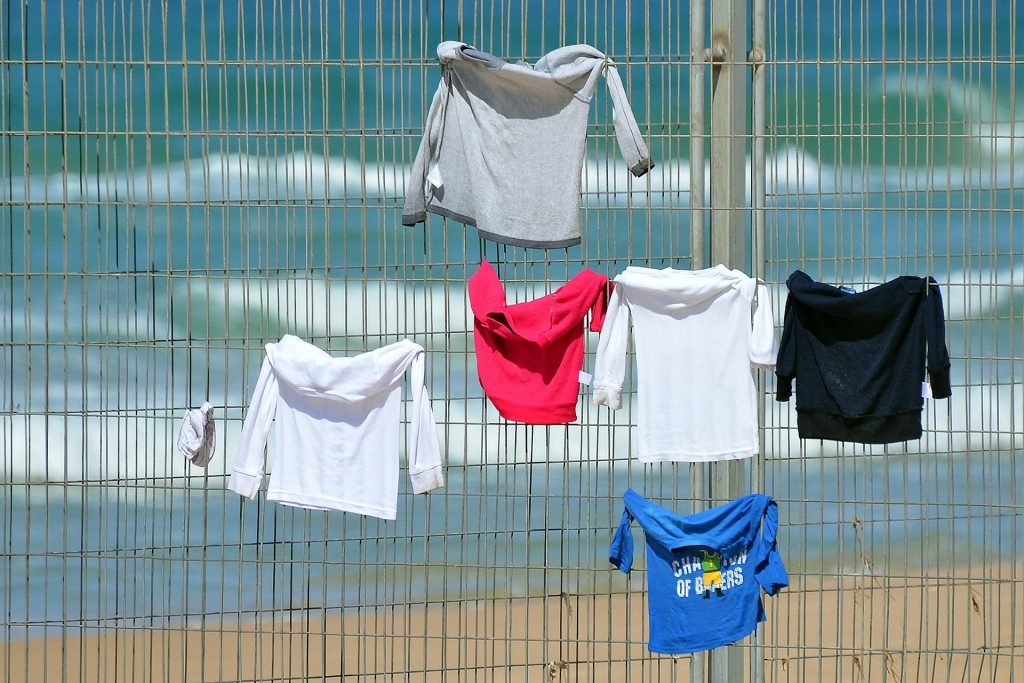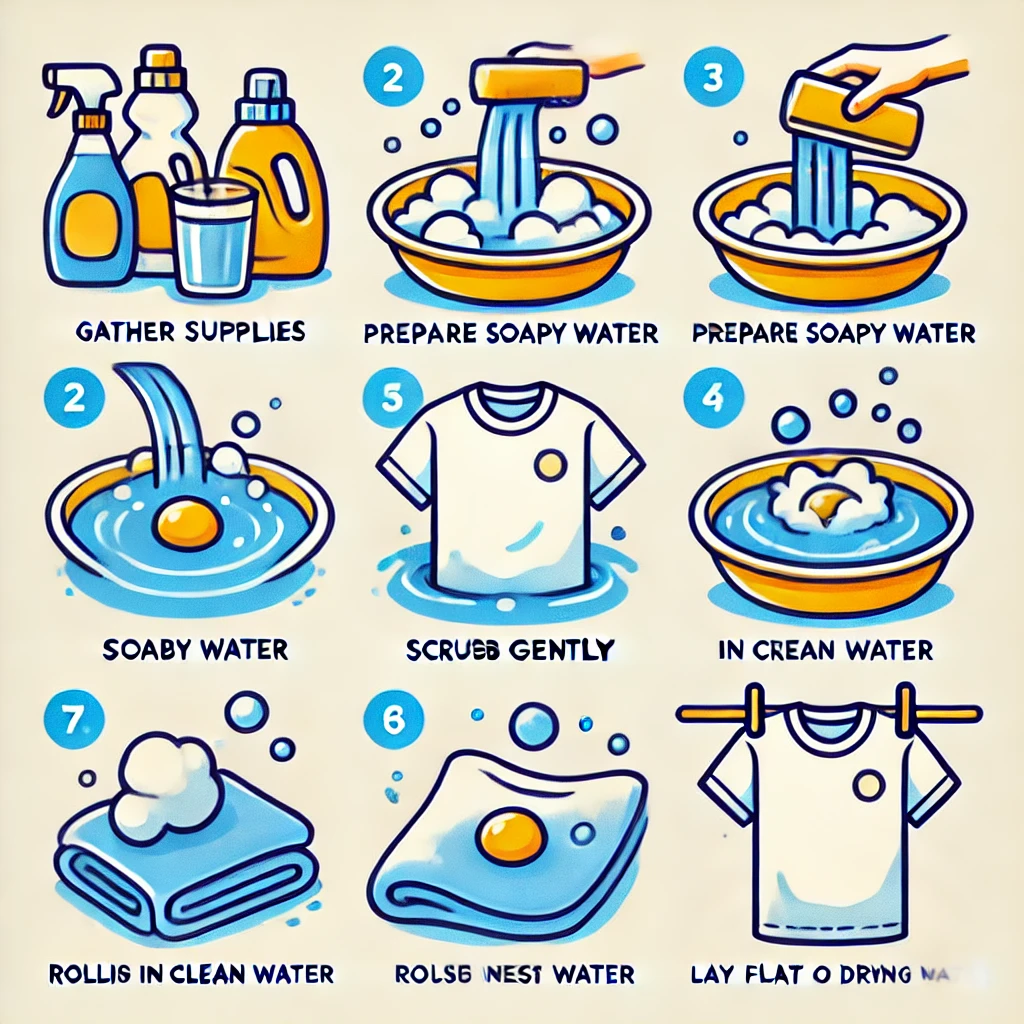Hand washing t-shirts is an effective, gentle, and eco-friendly alternative to machine washing. While washing machines are convenient, they can be too harsh for delicate fabrics, intricate designs, or high-quality t-shirts. Whether you’re washing by hand to preserve your garments or because your washer is unavailable, this method ensures your t-shirts remain in excellent condition for a longer time.
In this guide, we’ll cover everything you need to know about washing t-shirts by hand, including a step-by-step process, tips for handling specific materials, and common mistakes to avoid. With proper care, your t-shirts will look and feel as good as new after every wash.

Why Should You Wash T-Shirts by Hand?
Hand washing offers several advantages over machine washing, especially for garments that require special care.
1. Gentle on Fabrics
Machine washing involves rigorous agitation that can stretch or damage t-shirt fibers over time. Hand washing eliminates this risk, making it ideal for delicate materials like cotton, bamboo, or linen.
2. Prolongs Lifespan
By minimizing wear and tear, hand washing helps maintain the quality and appearance of your t-shirts, especially those with printed designs, embroidery, or embellishments.
3. Eco-Friendly
Hand washing uses significantly less water and energy compared to machines, making it an environmentally conscious choice.
4. Great for Small Loads
If you only need to clean a few t-shirts, hand washing is quicker and more efficient than running a full machine cycle.
Step-by-Step Guide to Washing T-Shirts by Hand
Step 1: Gather Your Supplies
Before starting, ensure you have the following items ready:
- A clean sink, basin, or bucket
- Lukewarm water (ideal for most fabrics)
- A mild detergent (preferably liquid or powder designed for hand washing)
- A soft brush or sponge (optional, for stains)
- A clean towel for drying
Tip: If you don’t have detergent, alternatives like baking soda, vinegar, or gentle shampoo can work as effective substitutes.

Step 2: Prepare the Washing Solution
- Fill the sink or basin with lukewarm water. Avoid using hot water, as it can cause fabrics to shrink or lose their shape.
- Add a small amount of detergent, approximately 1 teaspoon per gallon of water.
- Stir the water gently to dissolve the detergent, ensuring an even mix.
Step 3: Pre-Treat Stains
- Check your t-shirts for stains, focusing on areas like collars, sleeves, and armpits.
- Apply a small amount of detergent directly to the stained areas.
- Let the detergent sit for 5–10 minutes to loosen the stain.
- Gently rub the stain with your fingers or a soft sponge in circular motions.
Warning: Avoid scrubbing too hard, as this can damage the fabric or fade colors.
Step 4: Soak the T-Shirts
- Submerge the t-shirts fully in the detergent solution.
- Allow them to soak for 10–20 minutes.
- For lightly soiled t-shirts, a 10-minute soak is sufficient.
- Heavily soiled garments may require up to 30 minutes.
Tip: Swirl the water gently every 5 minutes to help loosen dirt.
Step 5: Gently Wash the T-Shirts
- Take one t-shirt at a time and focus on areas that accumulate dirt, such as the collar, armpits, and hems.
- Gently rub the fabric against itself to clean it. Avoid twisting or wringing, as this can stretch the material.
- If the t-shirt has prints or embellishments, avoid rubbing those areas to prevent damage.
Step 6: Rinse Thoroughly
- Drain the soapy water and refill the sink or basin with clean, lukewarm water.
- Rinse each t-shirt individually by submerging it in the clean water and swishing it around.
- Repeat the rinsing process with fresh water until no soap residue remains.
Why Rinse Thoroughly?
Soap residue left on the fabric can cause stiffness or discoloration, so ensure your t-shirts are completely soap-free.
Step 7: Dry the T-Shirts
- Lay a clean, dry towel flat on a surface.
- Place the wet t-shirt on the towel and gently roll it up to absorb excess water.
- Unroll the towel and reshape the t-shirt by smoothing out wrinkles and pulling it back into its original shape.
- Lay the t-shirt flat on a drying rack or clean surface to air dry.
Important Tips:
- Avoid hanging t-shirts by the neckline, as this can stretch them out.
- Dry in a shaded area to prevent fading caused by direct sunlight.
Common Mistakes to Avoid When Hand Washing T-Shirts
Using hot water can shrink or damage the fibers, so it’s essential to stick to lukewarm water. Over-soaking your t-shirts for more than 20–30 minutes can weaken the fabric’s integrity, so keep soaking time minimal. Aggressive scrubbing, especially on delicate or printed areas, may cause fading, pilling, or even tearing—gentle motions are always better. Skipping the rinsing step leaves detergent residue, which can lead to stiffness and potential skin irritation, so rinse thoroughly until no soap remains. Avoid hanging wet t-shirts by the neckline, as this can stretch the fabric; instead, lay them flat to air dry and maintain their shape.
Benefits of Hand Washing T-Shirts
Hand washing t-shirts offers several advantages that go beyond basic cleaning, ensuring your favorite garments stay in great condition while also benefiting your wallet and the environment.
Better Fabric Care
Hand washing extends the lifespan of delicate fabrics by avoiding the harsh agitation of washing machines. It reduces wear and tear, making it particularly beneficial for t-shirts made of fragile materials or those with intricate designs, prints, or embellishments.
Cost-Effective
This method saves money by using less water and energy compared to machine washing. It’s an economical choice, especially for individuals who only need to wash a few items at a time or those without access to laundry facilities.
Eco-Friendly
Hand washing t-shirts contributes to sustainable living by conserving resources. It uses significantly less water and no electricity, reducing your overall environmental footprint and making it a greener choice.
Gentle Cleaning
Unlike machine washing, hand washing provides full control over how your garments are handled. This gentle approach is ideal for high-quality fabrics and ensures the fibers remain intact while keeping prints, embroidery, or embellishments in excellent condition. This makes hand washing perfect for preserving sentimental or expensive t-shirts.
FAQs About Hand Washing T-Shirts
1. How should t-shirts be washed?
T-shirts should be washed using lukewarm water and a mild detergent. Hand washing is ideal for delicate fabrics, while machine washing works for more durable garments.
2. How to wash t-shirts without ruining them?
To prevent damage, avoid hot water, aggressive scrubbing, and wringing. Use gentle rubbing motions and ensure thorough rinsing.
3. How do you wash a shirt without a machine?
Hand washing involves soaking the shirt in a detergent solution, gently cleaning it, rinsing thoroughly, and air drying. It’s simple and effective.
4. Is hand washing clothes effective?
Yes, hand washing is very effective, especially for maintaining the quality of delicate or high-value garments. It provides more control compared to machine washing.
Conclusion
Hand washing t-shirts is a simple yet effective way to care for your clothes, ensuring they stay clean, fresh, and long-lasting. By following the steps outlined in this guide, you can prevent damage, preserve fabric quality, and maintain the vibrant appearance of your favorite garments. Whether you’re dealing with delicate fabrics or simply want to adopt more sustainable laundry practices, hand washing is an invaluable skill to master.
External Sources
